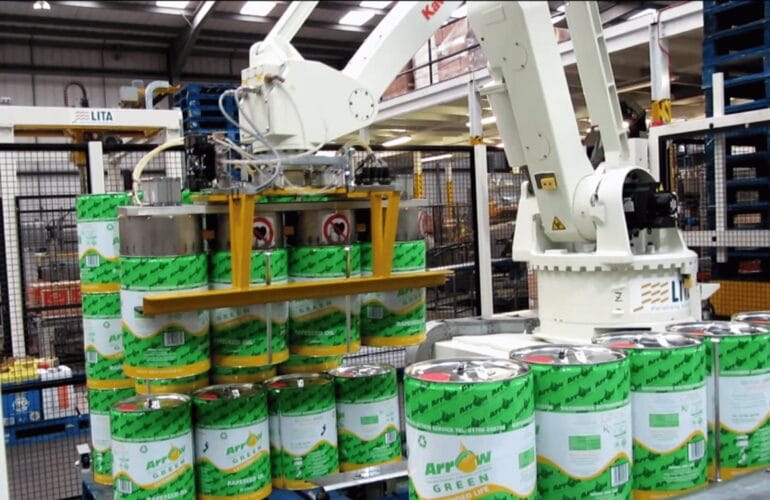When we talk about automation in manufacturing, we usually mean the introduction of robotics or other machinery in order to speed up manual processes. However, this isn’t the only way that automation can be introduced into a manufacturing operation. Robotic Process Automation (RPA) is growing in popularity amongst manufacturers as they seek to ensure their back office functions run as smoothly as the rest of their business.
What is Robotic Process Automation?
A type of automation that’s emerged relatively recently, RPA systems use software robots, often referred to as bots, to automate and perform repetitive, rule-based and data-intensive business processing tasks previously done by humans.
They are particularly suited to tasks related to data management, documentation and communication, making them useful in departments such as HR, finance and customer support.
The bots are designed to mimic human interaction and choices and can manipulate data, trigger responses and perform a wide range of tasks across many applications and systems, just like a human user would.
How does RPA compare to traditional automation?
In contrast, traditional automation handles the physical tasks on the production line, automating processes with the use of machines, control systems and mechanical equipment.
It’s this type of automation that manufacturers are typically more familiar with – palletisers and depalletisers to load and unload pallets, conveyors to move items through the operation and sack-filling machines to ensure precise volumes every time.
Both types of automation can be extremely valuable in a manufacturing environment, each helping to improve efficiency, quality and productivity in a different way. Therefore, by combining the two, manufacturers can streamline their operations and enhance their overall competitiveness.
Incorporating RPA in your operations
In a business, organisation in the back office is as important as efficiency on the production line. Accurate inventories, timely invoicing, liaison with suppliers and effective customer service are all vital when it comes to ensuring that things run smoothly.
RPA can help in a number of ways:
- Data entry and processing: Manufacturing involves handling a vast amount of data related to production, orders and quality control. RPA can automate data entry by extracting data from spreadsheets, emails and other sources and entering it into relevant systems faster and more accurately than a human operator.
- Inventory management: RPA helps manage inventory by monitoring and automatically updating stock levels, generating reorder alerts, and tracking the movement of materials and products between departments.
- Order processing: RPA can automate tasks such as order entry, confirmation and invoicing but also go one step further, checking product availability against the inventory and updating customers on order status.
- Compliance and reporting: By automating the collection and reporting of required data, RPA helps to ensure compliance with industry regulations and standards and provides a paper trail should it be needed.
- HR processes: RPA can be used for automating HR processes like employee onboarding, payroll processing and benefits administration, improving HR efficiency and reducing delays.
- Customer support: By using RPA bots to handle routine inquiries, such as tracking order status or providing product information, human agents are freed up to focus on responding to more complex customer issues.
Used correctly, RPA can also make a difference on the manufacturing floor, introducing timesaving processes to help manage:
- Preventative maintenance: RPA can monitor the condition of equipment, schedule routine maintenance and generate reports, reducing unplanned downtime.
- Quality control: RPA bots remove the need to have an individual on quality control. They can perform repetitive inspection tasks such as checking measurements, flagging any issues for human review.
- Production planning and scheduling: By analysing demand, machine availability and other factors, RPA can identify the most efficient production plans and automatically adjust schedules in response to changes.
Combining RPA and traditional automation
The advantages of investing in traditional automation are well-documented. Ranging from increased efficiency and cost savings to improved product quality and safety, choosing the right automation can bring real and tangible benefits.
Combining traditional automation with RPA allows those benefits to be felt across the business, further improving efficiency and giving a clear competitive advantage.
For more advice on introducing automation into your business, get in touch.




